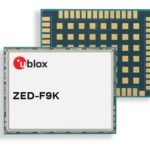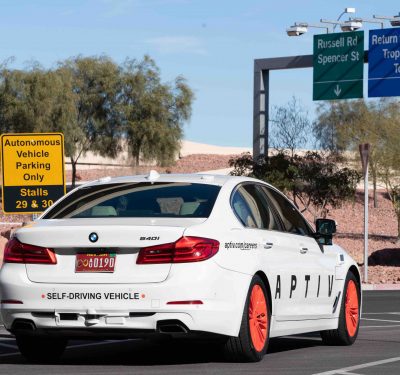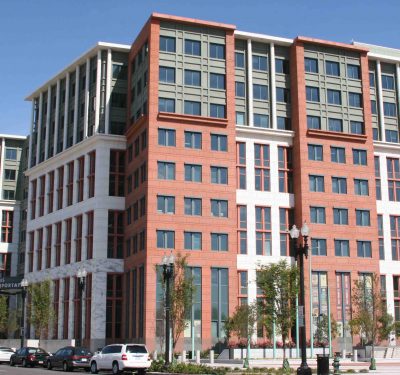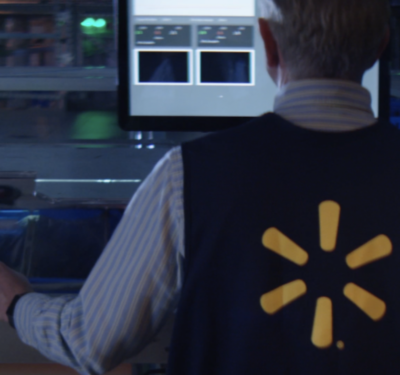The u-blox ZED-F9K multi-band, multi-constellation GNSS, RTK, dead reckoning module delivers a new level of performance in vehicle positioning, specifically adapted for assisted and autonomous driving applications.

Today, a growing number of professional as well as mass-market applications require positioning information. Higher accuracy is in demand in a wide range of scenarios, including in difficult environments such as cities and tunnels. Autonomous and assisted driving scenarios in particular involve some of the most stringent real-time positioning requirements.
On Thursday (May 2, 2019), u-blox, a leading global provider of positioning and wireless communication technologies, unveiled the u‑blox ZED-F9K high precision multi-band GNSS module with built-in inertial sensors.
The new module features the company’s latest generation of GNSS receiver technologies, a specially tailored signal processing algorithm platform, and correction services to deliver down to decimeter-level accuracy within seconds.
“When we say seconds we mean ten seconds, from the time you exit a tunnel until we get back to a fix,” Alex Ngi, u-blox Product Manager Positioning told Inside Unmanned Systems, “We now have a multi-band GNSS receiver, and we are compatible with modern GNSS correction services.” Correction services, such as QXWZ, HxGN SmartNet, Sapcorda and others, improve positioning accuracy by compensating ionospheric and other errors.
The new ZED-F9K module also receives GNSS signals from all orbiting GNSS constellations. The company’s popular GNSS modules have long featured multi-GNSS capabilities, but, Ngi said, “The new F9 series of products is the first generation that supports the use of all four constellations at the same time—GPS, GLONASS, BeiDou and Galileo–simultaneously.” More visible satellites mean better positioning performance in partially obstructed conditions, while increased satellite signal diversity makes for faster convergence times when signals are interrupted.
With the ZED-F9K, the aim has been to work with wide-lane technology and decimeter-level accuracy, as opposed to centimeter-level accuracy. “This gives us better performance in urban environments,” said Ngi. “We are more immune to having fewer satellites and limited access to correction services, those problems that we often see in urban environments.”
The module’s integrated inertial sensors constantly monitor changes in a moving vehicle’s trajectory and continue to deliver lane-accurate positioning when satellite signals are partially or completely obstructed, as in parking garages, tunnels, urban canyons, or forested areas. When satellite signals become available again, the module combines inertial sensor data with GNSS signals to deliver fast convergence times.
“This new product gives you a very accurate position, but it’s not meant to deliver ASIL [Automotive Safety Integrity Level]-type performance on
its own. The module is very good at letting you know which lane you’re in, in real time. It allows you to know that you’re in a particular lane so you can then use your other systems and sensors, be it radar, LiDAR, cameras, to do autonomous driving. With the ZED-F9K, you know you’re in the right zone, in the right lane, and that allows you to enable the autonomous driving modes.”
Ngi said the new software algorithm has been fine-tuned to serve the specific needs of today’s evolving auto industry: “We are not just taking our high-precision product and wrapping it in an automotive shell. We have made deliberate software and performance choices to serve specific automotive applications. The ZED‑F9K’s accuracy and low latency also make it ideal for automotive OEMs and Tier 1s developing ‘Vehicle-to-everything’ (V2X) communication systems.
“We’ve been delivering samples since last February,” he said, “so people have been evaluating the modules, and we also have some automotive OEMs that are already designing the module into new cars. We conceived the ZED-F9K to be a turnkey, high-precision GNSS solution that caters to the needs of today’s and tomorrow’s connected cars. We are not talking yet about the super-high-volume models, it’s high-end cars right now, but it’s happening.
The company says new samples will be available upon request by July 2019.






